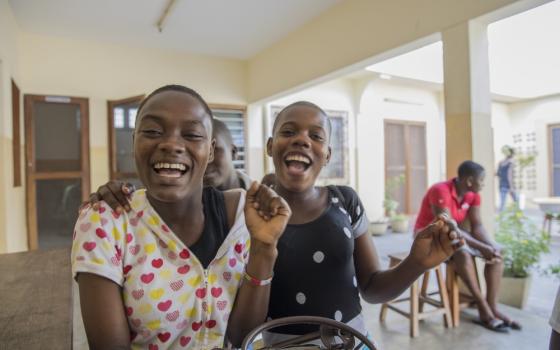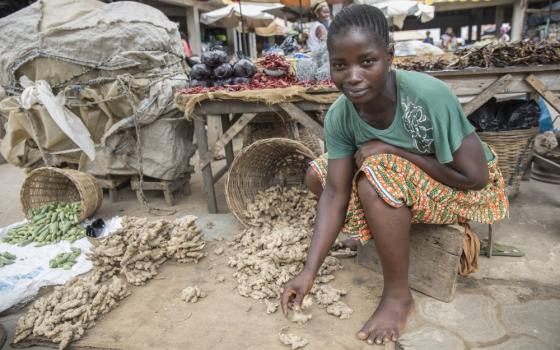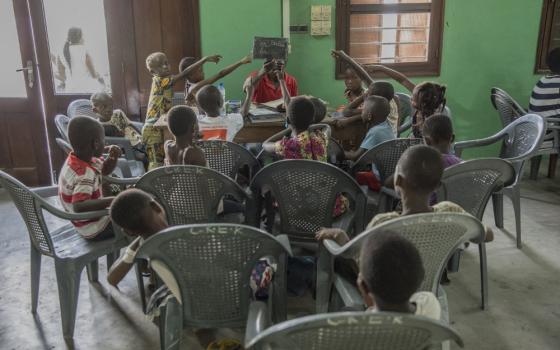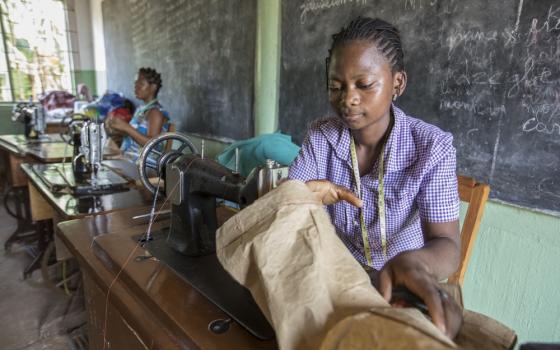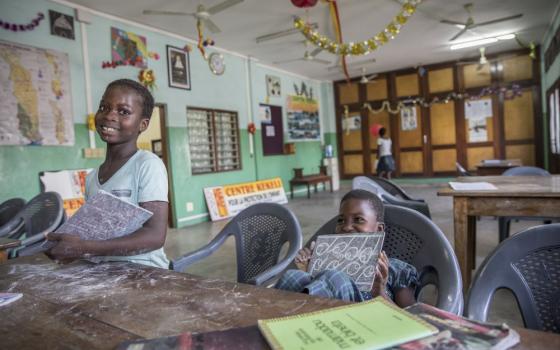They are the slaves of today. Some of them commit crimes to make a living; others are chained to exploitation systems that benefit their "employers" or "protectors" on the street. They suffer ill-treatment, abuse, poor physical growth and lack of affection — these are reflected in their faces and their small stature. They are children. They are victims of trafficking or have been abandoned by their families because of poverty or disease.
As soon as the Carmelite Sisters of Charity of Vedruna leave the house, they stumble upon these little ones whom nobody encourages to go to school in the morning or to develop their abilities. Neither you nor I could bear the labor that waits for them hour after hour, and whose only benefit is mere survival.
The girl's gaze is suspicious the first few days after her rescue. Her immobility speaks for her. She sits where she is offered a chair, or she lies on the floor as if hoping to recover the energy lost during the years she has been selling on the streets or working nonstop in the home of uncaring adults. It takes many weeks before we discover her smile, the joy of discovering herself as a child, the emotion in her words the first time she demands more games and more hugs. Little by little, these children are integrated into the groups of the other children who were freed before them.
In the West African countries of Gabon and Togo* I have watched Sisters Rita, Julienne, Lucie, Clarisse, Gaby and Elisabeth get up each morning with one goal: to offer children an alternative life and to protect the most vulnerable. Regardless of the children's nationality, age or whether they are "nice or annoying," the sisters open their hearts to them. They concentrate all their energy on helping the children heal from the wounds that mark their small bodies and making possible dreams for a better tomorrow.
The sisters work in centers for the protection of children — Kekeli ("light") in Togo, and Arc-en-Ciel ("rainbow") and Espoir ("hope") in Gabon.
Once the children relax and begin to show signs of life, another challenge awaits them: deciding what to do with their lives. With the help of their educators, social worker, psychologist, and— where possible — their families, they will face new horizons, new opportunities. But it will not be easy: They will not be exempt from the struggle to become the best they can be.
It is difficult to bury the past, roll away the stone, and move forward into that new life. Gripped by the negative experiences of their past, they are afraid, but know they can count on a fantastic team of adults who believe in them, who will help them heal their wounds, to get up again if they fall, and start over when something goes wrong.
The joy of those sisters when a child leaves its prison and begins to walk again after being buried alive, is like the joy of the woman who found her coin or the joy of the father who went out on the road to welcome the wayward son who came home. They are all joyful, recognizing the God who always chooses to be lost along with the little ones. And their hope is revived in every encounter.
For the last 15 years, I've been accompanying vulnerable children in West and Central Africa, first victims from the Liberian civil war, then Togolese market children, abused girls, street boys, or trafficked girls in Gabon.
I have discovered that within their small bodies are big "masters of life." Being a child soldier, a street seller, or victim of incest or trafficking is not the most important part of who they are; rather it is their capacity to get up every day; to stand and show the world how much they have to contribute to a better world.
They do not let their scars kill them, and they know that they don't deserve to be punished or to be apart from society. They are demanding that we keep announcing Good News to the world. They are demanding that we use all our energies to make the protection laws more than nice words on paper. They challenge us to be our best selves, so they may still have an opportunity.
Even if 9 million children are exposed to exploitation, they are not mere figures on paper. Each of them is a little brother or sister who wakes up every morning with the hope of someone coming to take them away from their nightmare.
The joy of this ministry — sisters and their co-workers fighting against corruption and injustice — is reflected in the photos of Ana Palacios, a Spanish photojournalist who spent a few weeks catching glimpses of this light with her camera. Her pictures show the difference their care makes in the lives of the children.
What we do for them we do to him (Matthew 25:40).
[Covadonga (Cova) Orejas is a member of the Carmelite Charity Sisters of Vedruna. Originally from Spain, she is now a member of the African Province and is in charge of child protection programs in Togo and Gabon. Orejas has been working in child protection and Justice and Peace commissions in these countries since 2005 and in collaboration with the Jesuit Refugee Service in Laine refugee camp (2002-2005) during the Liberian civil war and Ivory Coast conflict.]
*The column originally stated that Gabon and Togo are East African countries.
